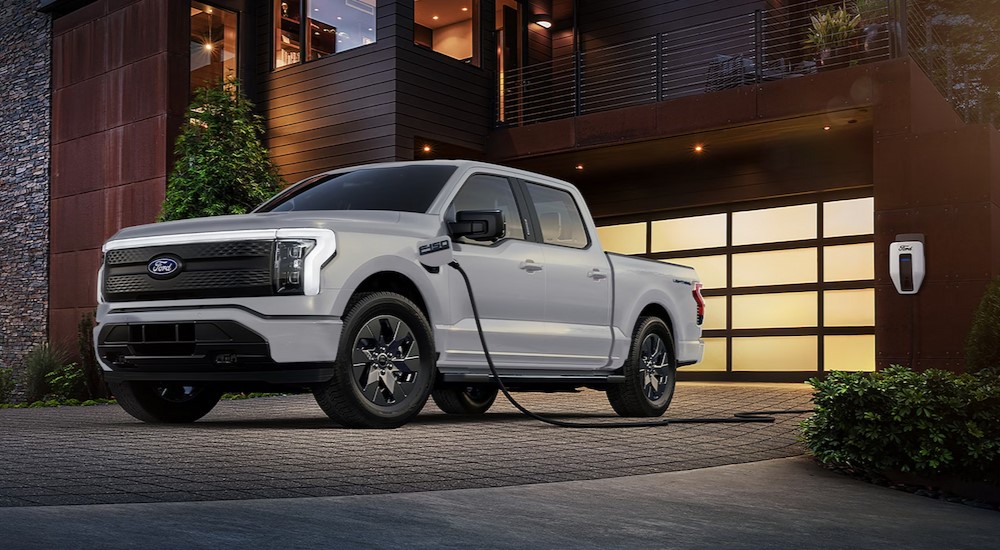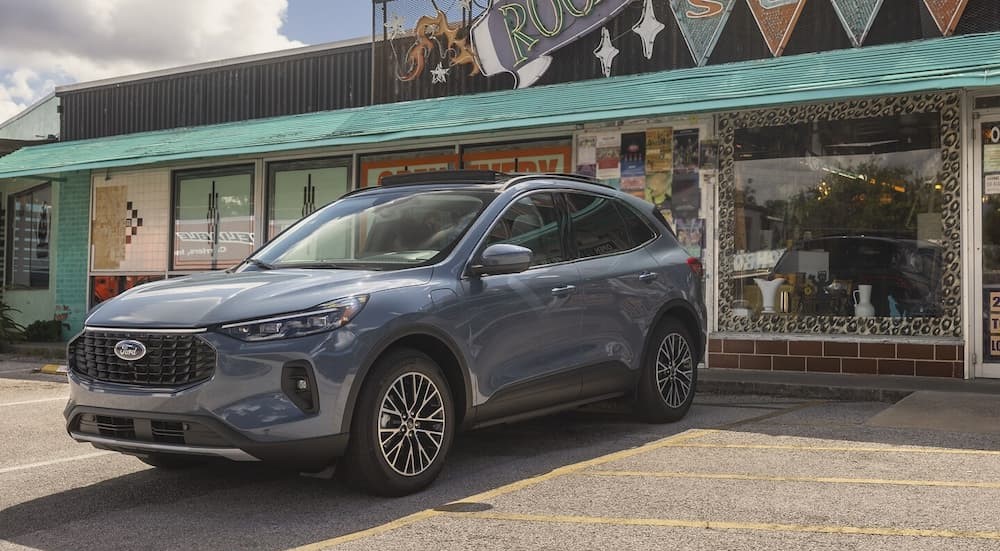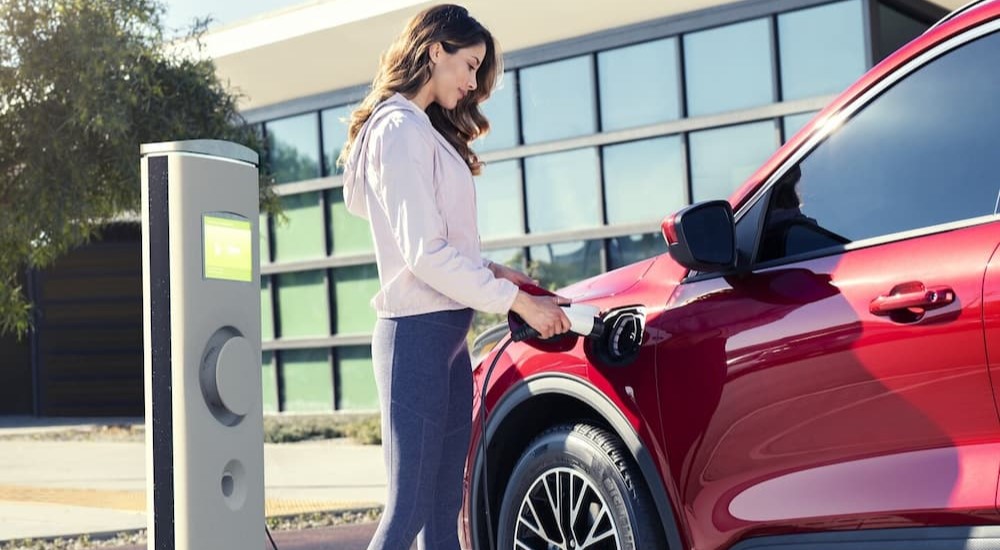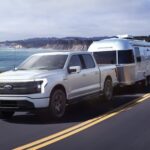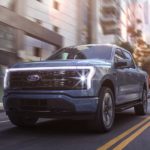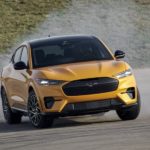There’s no denying that all-electric vehicles are an undeniable part of our automotive future, but is that future now? A quick glance at some recent headlines would suggest that the industry might be pumping its brakes when it comes to embracing the all-electric approach. While the EV segment certainly holds promise, practicality, cost, access to charging, and weaker-than-expected consumer demand have led some brands to reconsider going all-in on all-electric vehicles. Ford, Hyundai, Stellantis, and more have all scaled back their EV plans, pivoting to focus on new hybrid vehicles, as well as their traditional gas-powered models.
Ford’s flip-flopping is indicative of the market as a whole. With the Big Blue Oval initially announcing plans to produce two million EVs a year by 2026 and shift its entire European lineup to all-electric models by 2030, it has since tempered expectations and made some moves that would indicate a more conservative approach. The brand was one of the first to deliver a mass-produced all-electric truck in the Ford F-150 Lightning, but it recently announced it’ll reduce its investment in all-electric vehicles by 10%, and it canceled the 2025 debut of a three-row electric SUV that held the potential to bring a family-friendly EV to local Ford dealers.
So, what factors have contributed to the company’s revised EV plans? Are hybrids the key to short-term success? Can you expect to see all-electric models dominating the Blue Oval’s lineup? I’ll examine all that and more as I explore how Ford’s ambitious EV plans stalled out.
How Did We Get Here?
Shifting Priorities
At one point, Ford looked like it was poised to become a leader in the domestic EV market. The brand has already electrified two of its most iconic models—the Mustang Mach-E and F-150 Lightning—and staked its claim in the cargo van market with the all-electric E-Transit. While consumer demand for the first two models was initially strong, that enthusiasm seems to have faded as of late. The F-150 Lightning serves as a good case study of this trend. Between 2022 and 2023 the all-electric pickup enjoyed a year-over-year sales increase of 55%, but Ford has simply never hit the sorts of sales target it was looking for. The brand initially expected to move around 3,200 Lightnings a week, but that number has stubbornly stayed closer to the 1,500 mark.
This flagging demand has led Ford to make some important changes to its production schedule. The F-150 Lightning might not be hitting its sales targets, but the Ranger pickup and revived Bronco SUV have been moving at a brisk pace. In order to meet the current demand for these two models, Ford has hired between 600 and 700 workers and created a new third shift at the facilities that produce them. An additional 700 workers are being pulled from the F-150 Lightning production line, allowing Ford to churn out new Ranger and Bronco models 24 hours a day.
This might seem like a dark portent for Ford’s EV future, but a more optimistic outlook would suggest that this is simply a pragmatic and strategic move on Ford’s part. By focusing on the models that are currently in high demand, Ford can prop up its sales long enough to take a more measured stab at the EV market. Experience is also likely to play a part; EV versions of the Maverick and Bronco are bound to make their way to Ford dealerships at some point, and by transitioning experienced Lightning workers to the Maverick and Bronco, Ford will probably be able to create more consistent, reliable all-electric versions of the two models when they finally enter production.
Price Wars
Ford’s EV ambitions have been stymied by a pesky newcomer in Tesla. The company’s Model Y midsize crossover SUV is easily the country’s best-selling EV, moving 385,000 units in 2023 alone. The Tesla Model 3 trailed the Model Y by 150,000 units in the same year, but there’s a big drop-off between the number two and three spots, with the Chevy Bolt logging just 62,000 sales. The Mustang Mach-E finished fourth with a respectable 40,000 units—and is still the second-best-selling all-electric SUV—but Tesla is undoubtedly the brand to beat in the modern EV market.
In order to close the gap, Ford has engaged in a brutal pricing war that has seen the brand slash prices by as much as $8,000 on some models to bring the sporty EV’s starting price below the all-important $40,000 mark. A $7,500 cash incentive on leased Mach-Es has allowed Ford to make up for the fact that the model isn’t eligible for the government’s $7,500 EV tax credit, but that’s not a very compelling argument for those who would rather own than lease.
Tesla has responded in kind, cutting the price of some of its most popular models as it attempts to maintain its dominance in the US market. Ford and Tesla aren’t alone when it comes to slashing prices; the national average price of an EV has fallen by almost 10% since 2023 to a new average of $55,252. This might be good news for consumers looking to score a new EV on the cheap, but only time will tell how long the automakers can afford to keep cutting into the already slim profit margin of their EV offerings.
China
Ford’s revised EV plans can be at least partially attributed to the impact of China’s emerging EV market. The world’s second-largest country has embraced all-electric vehicles in a big way, with the government offering lucrative subsidies, procurement contracts, consumer incentives, and a rapid expansion of China’s EV charging network. Legacy automakers—particularly those in the West—simply can’t compete with the new breed of ultra-affordable EVs coming out of China, which represented 52% of global EV sales in 2021.
All-electric vehicles are still pretty expensive to produce, and some auto execs believe that any attempt to keep pace with the Chinese market is something of a fool’s errand that only threatens to drag the whole industry down. “If you go and cut pricing disregarding the reality of cost, it’s a race to the bottom, and that will end up with a bloodbath,” said Stellantis CEO Carlos Tavares in early 2024.
Chinese dominance of the EV battery market allows the country to produce some of the cheapest EVs on the market. China is home to six of the world’s ten largest battery markers, which leverage almost 900 gigawatt-hours of manufacturing capacity to give the country a 77% market share in the EV battery segment. These manufacturers sell their batteries to Chinese EV manufacturers at a steep discount when compared to those marked for export, giving Chinese brands a serious advantage in the ultra-competitive market.
What’s Next?
How do these various market factors affect Ford’s EV plans? As mentioned, Ford has shelved the introduction of its all-new, three-row electric SUV for the time being, but that doesn’t mean the model is dead in the water. Ford has simply revised the timeline, suggesting that the three-row crossover EV will debut in 2027 rather than 2025 as initially planned. In order to meet this goal, Ford is currently retooling its Oakville, Ontario, assembly plant into a new hub for EVs.
In the meantime, Ford is looking to hybrids to drive sales. The gas/electric pairing has proved to be a fruitful formula for the industry as a whole, with hybrids boasting consistent sales and offering US drivers the sort of flexibility they’ve become accustomed to over 100-plus years of internal combustion. The company has a stated goal of offering hybrid versions of all of its current gas-powered models by 2030. The Maverick and F-150 pickups, Escape ST-Line Elite, and Escape Plug-In Hybrid have already earned their own hybrid versions and contributed to a 42% increase in segment sales when compared to 2023.
Ford hopes this increased focus on hybrids will help boost consumer access and corporate profit margins, thanks in large part to the smaller batteries required by such models. “When you look at the three-row SUV, hybrid technologies or multiple propulsion technologies—for those customers—is the best solution,” said John Lawler, Ford vice chair and CFO, during an August conference call.
Looking down the road, Ford is hoping that a new, affordable EV platform will allow it to create a more sustainable EV lineup. Ford is shifting its battery production from Poland to its Michigan plant in a move that will allow forthcoming EVs to qualify for the $7,500 EV tax credit but also has a small team of engineers working on the new platform, which will likely rely on lithium iron phosphate batteries that are 30% more affordable than their lithium-ion predecessors. This platform would likely be aimed at the smaller side of the EV segment with a compact SUV, though there has also been talk of a smaller all-electric pickup nicknamed the T3 and a vehicle aimed specifically at the rideshare/taxi market.
There is also a rumor of a Ford Pro commercial fan that employs an EV powertrain slated for 2026. Details are still hard to come by, but an ongoing expansion of Ford’s Ohio Assembly Plant in Avon Lake would suggest that it’s more than just a rumor. The automaker is also in the process of creating its BlueOval City campus in Tennessee, which will include nearly 4,000 tons of stamping equipment for Ford’s newest electric truck.
With so many substantial capital investments in the works, there’s no doubting Ford’s commitment to the EV segment. You can’t fault Ford for setting a lofty goal, but some harsh economic realities have thrown a wrench or two into the works. Once the brand works out a few kinks—including finding a way to produce more affordable batteries, compete with Chinese brands on price, and balance the current demand for hybrids with the impending need for new EVs—Ford seems poised to take full advantage of the all-electric market.
A new all-electric platform could be a game-changer for Ford, allowing it to meet the demand for the crossover models that have proven so profitable in today’s market. The automaker already produces the country’s best-selling vehicle—the Ford F-150—and while the Lightning might not move nearly the same number of units, Ford’s long history, customer loyalty, and brand recognition will likely carry it through these turbulent times.
